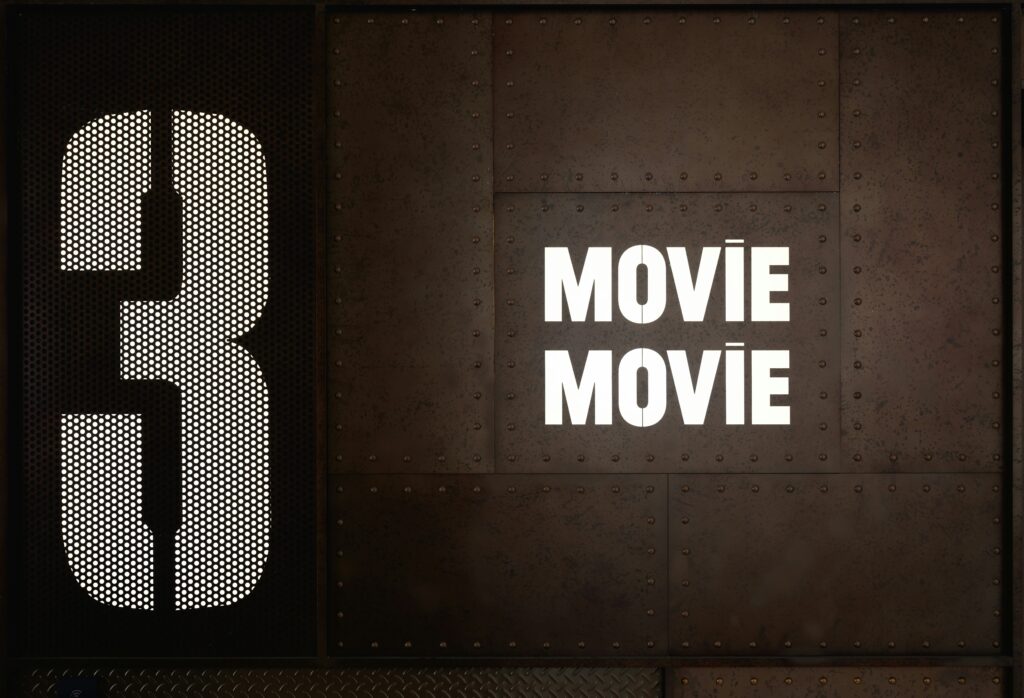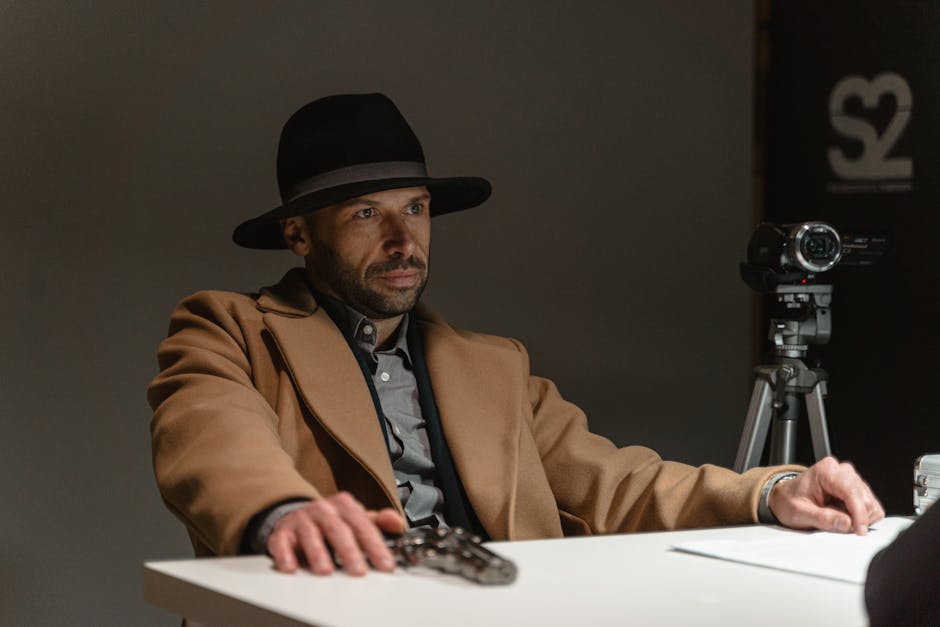Introduction: A Year of Big Swings and Bigger Screens
2024 has been a rollercoaster for film. Genre walls came down—horror-thrillers mashed with rom-coms, sci-fi got deeply personal, and even traditional dramas leaned into experimental visuals. Big studio tentpoles didn’t always dominate; smaller, weirder films found surprising box office traction thanks to smart marketing, word-of-mouth, and festival buzz. Meanwhile, streaming platforms kept shifting the ground. Several once-hyped originals flopped hard, while low-budget indie titles quietly built cult followings through algorithm luck and loyal viewers.
So what actually makes a film unmissable this year? It’s not just A-listers or massive VFX shots. The standout movies in 2024 have something else: distinct voice, emotional kick, replay value. If a story feels honest—bold, strange, or unpolished—it sticks. Audiences are moving past passive viewing. They want something that hits, then lingers.
And critics? They’re back in the spotlight. In an age of endless content, a sharp review can break a film out of the noise. People are seeking curators—voices who filter hype from craft. It’s not about snobbery. It’s about finding the real gems in a flood of forgettable content. If you’re scrolling, unsure what to watch, that Rotten Tomatoes pull quote or New York Times headline might be the deciding factor. Critical reviews don’t just shape perception—they give films a second life, and sometimes, a fighting chance.
Best Overall Film
Title, Director, and Release Platform
Film: “The Quiet Divide” Director: Eliza Wren Release Platform: Limited theatrical release, followed by global streaming via Horizon+
This intimate yet haunting drama took everyone by surprise in early 2024, quickly climbing critical charts thanks to its rich storytelling and technical brilliance.
What Sets It Apart
“The Quiet Divide” stands out for its masterful blend of emotional complexity and visual storytelling. Several key elements contribute to its success:
- Direction: Eliza Wren’s steady hand brings a quiet intensity, guiding the film through emotionally charged territory without veering into melodrama.
- Acting: Lead performances by Mara Lee and Tonio Cruz deliver a subtlety rarely seen, portraying layered characters with grace and restraint.
- Storytelling: The narrative plays with time and memory in a way that challenges the viewer while remaining grounded and accessible.
- Score: A minimalist, piano-driven score enhances the emotional atmosphere without overwhelming it, composed by acclaimed newcomer Jalen Matsuda.
Critical and Audience Resonance
Critics praised the film’s ability to explore grief, reconciliation, and personal growth with empathy and nuance. Audiences connected with its realism and emotional honesty, leading to high word-of-mouth appeal.
- Rotten Tomatoes Score: 94% (Critics) / 90% (Audience)
- Awards Buzz: Expected frontrunner at several major festivals and likely Oscar contender for Best Picture and Best Director
“The Quiet Divide” isn’t just 2024’s best cinematic work—it’s the kind of film that lingers long after the credits roll.
Most Original Screenplay
Some films break the rules. A few rewrite them entirely. This year’s standout for most original screenplay proved that innovation still has a place in mainstream cinema—if executed with precision.
Breaking the Mold Without Breaking the Story
The winning script didn’t simply toss out tropes. Instead, it carefully restructured them:
- Non-linear narrative: A timeline that unfolded like a puzzle, revealing key emotional points exactly when needed
- Dynamic character arcs: Every character felt essential, multi-dimensional, and unpredictable without being ungrounded
- World-building with purpose: Even the smallest details served the plot, deepening the setting instead of just decorating it
Dialogue That Lingers
What truly elevated the screenplay was its unforgettable dialogue:
- Conversations that carried subtext without being opaque
- Humor that enhanced emotional depth instead of undercutting it
- Monologues and exchanges that have already become quotable among fans
Why It Matters
Original screenwriting is increasingly rare in a market dominated by franchises, adaptations, and reboots. This film reminded critics and audiences:
- That fresh storytelling still resonates
- That risk can bring reward when paired with strong execution
- That even in a saturated market, creativity can break through
This screenplay wasn’t just different—it was deliberate, making it a defining narrative moment in cinema this year.
Best Performance of the Year
Lily Gladstone in Killers of the Flower Moon didn’t just define her year — she redefined what quiet force on screen looks like. In a film crowded with heavyweight names and historical tension, Gladstone dialed in a performance that was all control, grief, and unspoken resistance. Her portrayal of Mollie Burkhart wasn’t showy, but it didn’t need to be. Every glance and pause carried weight.
The emotional range she brought — from trust to devastation to unbreakable resolve — hit harder because it stayed grounded. Critics highlighted her exacting screen presence, while audiences felt the performance long after the credits rolled. She turned a figure often written as passive into someone interior, vital, and deeply commanding.
In doing so, Gladstone quietly tore down the tired “noble victim” archetype. She gave us someone with depth, fire, and humanity. It wasn’t just a standout performance — it was a recalibration of what leading roles should allow room for, especially for Indigenous women on screen.
Best Cinematography
Some films tell stories with words. Others do it with silence, shadows, and sweeping visuals. This year’s standout in cinematography made its mark not through excess, but precision. It showed that the right light, the right movement, and the right moment can eclipse even the most elaborate plot twists.
From the first frame, this film grabs your eye and doesn’t let go. It’s in the warm diffusion of morning sun across a character’s face. The electric blue haze of a city night. The lingering handheld shot that follows, stumbles, then stops—just as the character does. Every frame is composed like it matters, because it does.
This isn’t eye candy—it’s visual storytelling with purpose. The color grading amplifies emotion without shouting. The camera doesn’t just observe; it moves like it’s part of the scene. Thoughtful zooms, restrained pans, wide landscapes that breathe.
And while it’ll hit differently on any screen, it demands the biggest one possible. This isn’t a phone-in-bed watch. This is sit-down, lights-down, let-your-eyes-adjust kind of cinema. A reminder that even in a hyper-streamable world, scale still commands awe.
Underrated Gem
“The Silent Trace,” directed by Lena Okoro, barely made a ripple in the mainstream circuit when it premiered quietly on an indie streaming platform in early spring. No big-name actors, no marketing blitz, and no viral trailer. On paper, it looked like yet another small-budget drama fated to disappear in the algorithm. But it didn’t. It found its second life—and critical redemption—through film forums, niche reviewers, and word-of-mouth among cinephiles.
So, why didn’t it break into the spotlight? Timing, mostly. It dropped the same week as two blockbuster sequels and got buried in headline fatigue. Plus, it’s a quiet film—measured pacing, a minimalist score, and an unflashy story about grief and inherited memory. Not something that lends itself well to hot takes or clickbait coverage.
But here’s the thing: it’s extraordinary. The cinematography is stark and intimate. The script is razor-sharp—every word earned, no filler. And Okoro’s direction? It’s a masterclass in restraint. Every frame feels lived-in. Real film buffs picked up on it fast and haven’t shut up since. It’s the kind of film that lingers. The kind you rewatch and catch new meaning in each time. In a year saturated with spectacle, “The Silent Trace” stands as a reminder: craft always matters.
Most Impactful Social Commentary
One of the boldest films of the year was “Ashes of Tomorrow,” directed by Lila Kent. It takes on climate displacement, generational guilt, and the ethics of survival—all without tipping into lecture mode. Set in a near-future coastal town slowly sinking due to rising sea levels, the story follows a teenage sister and her older brother as they try to hold what’s left of their family—and their community—together. There’s no melodrama, no villains twirling mustaches. Just people, trying to make decisions that matter, with very limited options.
What’s striking is how the film keeps its touch light even when the subject is heavy. Kent’s script pulls no punches but gives the audience room to breathe, to think, to feel their way through. The performances are grounded, the visuals raw but hauntingly beautiful. It doesn’t offer tidy answers—and that’s the point.
The response has been layered. Environmental groups have embraced it as a mirror that reflects the stakes without oversimplifying. Some critics praised it for capturing urgency without panic. Others pointed out its deft exploration of privilege and responsibility. And younger audiences, especially on platforms like Reddit and TikTok, have started deep-dive discussions on what the ending really means.
This isn’t just storytelling—it’s social reflection, sharpened into something cinematic and enduring.
The One Everyone’s Still Talking About
Every year, one film finds its way out of the theater and into the bloodstream of internet culture. In 2024, that film was undeniably Ashes in Bloom. Sure, it cleaned up at awards shows, but what gave it lasting power was the way it grabbed the internet by the collar. People weren’t just reviewing it—they were dissecting it, meme-ing it, debating its ending like their social circles depended on it.
Moments from the film went viral. One scene in particular—delivered with just a glance and two lines—turned into a meme template that bled into everything from sports to politics. TikTok edits broke a million views by the hour. A recurring line from the film? Now being quoted in ad campaigns and protest signs. Think pieces hit every publication, highbrow and otherwise, trying to unpack its message.
But what makes Ashes in Bloom more than just noise is how it wove personal heartbreak with systemic critique. It landed in a moment when people were ready to talk, tweet, argue, and cry about what it means to start over when the world keeps burning. It transcended its runtime. That’s not viral—that’s cultural staying power.
Emerging Director Spotlight
Few debuts hit as hard—and as confidently—as Jordan Kwon’s first feature, “Midwest Noise.” A quiet stunner set in a faded Illinois town, the film punches well above its budget. Kwon managed tight pacing, layered performances, and wide-lens cinematography that never felt indulgent. What stood out most, though, was the tone: dry, offbeat humor paired with a creeping emotional weight that sneaks up on you. He doesn’t just tell a story—he builds a rhythm.
Stylistically, Kwon swerves from formula. He leans into stillness, awkward silences, and long takes that beg viewers to lean in, not scroll past. That kind of risk rarely pays off for first-timers, but here it lands hard. Viewers called it “haunting.” Critics called it “a blueprint for how to debut without selling out.”
Kwon’s second film is already in development, and industry chatter says studios are watching closely—but he’s keeping control of the script. If his next project builds on this foundation, don’t be surprised if he’s headlining festivals this time next year.
How Streaming Shaped Film This Year
The battle between theaters and digital releases didn’t end—it just got more tactical. Big-budget tentpoles still aim for box office dominance, but more and more studios are picking their lane. Some films thrive on the big screen—spectacles designed for surround sound and cinematic scale. Others, especially character-driven stories and genre experiments, are finding real traction online. Direct-to-streaming doesn’t have the same stigma it once carried. In 2024, it’s a legit release strategy, not a last resort.
That said, quality still separates the contenders from the clutter. Streaming platforms are flooded with content, but few originals cut through. The standout ones? They show polish, smart scripts, and confident direction—regardless of budget. Viewers have gotten sharper. Critics too. A slick trailer isn’t enough. People are asking: does this film deliver something new, relevant, or emotionally real?
There’s also a bit more balance in how movies are judged. Audiences are done with hype for hype’s sake. A small indie that nails a point-of-view can go viral. Meanwhile, even blockbusters get dragged if they feel hollow. The scoring curve shifted from scale to sincerity.
For a look at what’s crushing it on the small screen, check out our bonus read: Television Series You Can’t Miss: Critical Reviews.
Final Thoughts: What Defines a Must-See Film Today
More Than Awards
Being a so-called “must-see” film in 2024 is about more than the usual trophies and critical consensus. Yes, accolades matter—but audiences are gravitating toward films that linger beyond the credits.
Key traits of today’s must-sees:
- Rewatchability: Great films invite second (and third) viewings, revealing more with each watch.
- Relevance: The most powerful movies feel timely, touching on social, emotional, or cultural undercurrents.
- Risk: Whether it’s bold storytelling, unconventional casting, or offbeat structure, today’s standout films aren’t afraid to break the mold.
Cinephiles Want More
Dedicated film lovers are pushing beyond box office hits and critically safe bets. They’re chasing:
- Diverse formats: Documentary hybrids, genre mashups, and experimental features are gaining ground.
- Global storytelling: Audiences are embracing international films across streaming and theater releases.
- New voices: From emerging directors to marginalized perspectives, variety is now a viewing priority.
What to Queue Up Next
Whether you’re a casual moviegoer or a devoted cinephile, these films are worth adding to your list:
- Parallel Streets – A genre-bending crime drama with surrealist flair.
- Where the Tide Turns – A slow-burn family story set against rising climate anxiety.
- Light Years Away – An indie sci-fi film with minimalist production and maximum emotional impact.
- Grain & Silence – An international art house entry that’s turning heads quietly but powerfully.
Each of these titles reflects the current cinematic moment: bold, human, and impossible to define by one category.


 Syvanna Kelricsona, co-founder of mediatrailspot blends her expertise in design, user experience, and emerging technology to deliver impactful content. She is passionate about showing how innovation in web and mobile platforms shapes the future of communication and creativity.
Syvanna Kelricsona, co-founder of mediatrailspot blends her expertise in design, user experience, and emerging technology to deliver impactful content. She is passionate about showing how innovation in web and mobile platforms shapes the future of communication and creativity.

